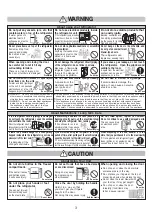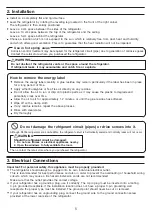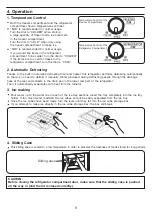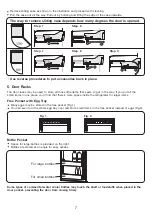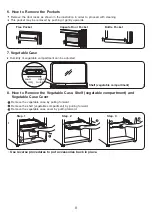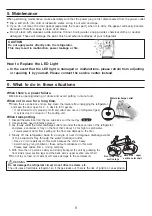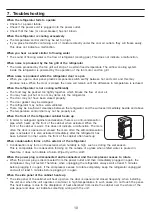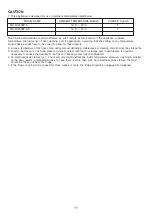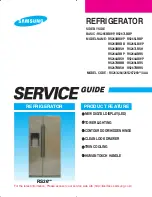
6
3. Ice-making
Pour water up to the water line in each of the ice tray sections. Insert the tray completely into the ice tray
holder. If too much water is added, the ice cubes cannot be easily separated from the ice tray.
Once the ice cubes have been made, turn the lever until they fall into the ice cube storage box.
If you attempt to make ice directly in the ice cube storage box, the box will break.
Sliding case
This sliding case is cooled to a low temperature in order to preserve the freshness of foods stored for long periods.
4. Sliding Case
CAUTION:
Before closing the refrigerator compartment door, make sure that the sliding case is pushed
all the way in (and the lid is closed correctly).
2. Automatic Defrosting
Thanks to the built-in automatic defrosting timer and heater, this refrigerator performs defrosting automatically,
so there is no need to defrost it manually. Water produced during defrosting passes through the drainage
hose at the rear and collects in the drain pan in the lower rear part of the refrigerator.
Then, it automatically evaporates with heat from the radiator.
4. Operation
1. Temperature Control
Temperature Control of the
Refrigerator Compartment
Temperature Control of the
Freezer Compartment
Both the freezer compartment and the refrigerator
compartment have a temperature controller.
“MID” is recommended for normal usage.
Turn the dial to “COLDER” when storing
a large quantity of frozen foods, ice cream etc.,
in the freezer compartment.
Turn the dial to “COLD” when only using
the freezer compartment to make ice.
“MID” is recommended for normal usage.
If you would like items in the refrigerator
compartment to be colder, turn the dial to “COLDER”.
If the items are too cold or freeze in the
refrigerator compartment, turn the dial to “COLD”.



